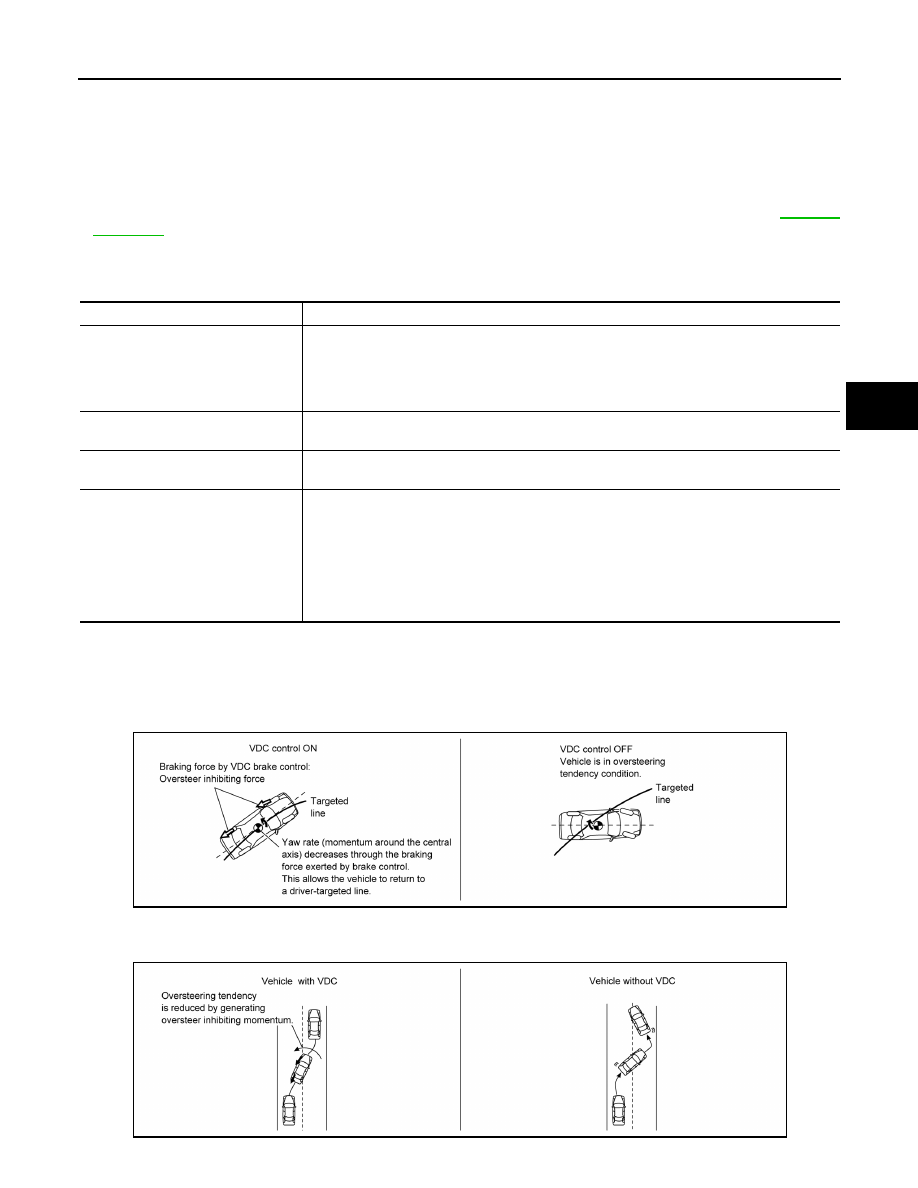Nissan Sentra. Manual - part 159

SYSTEM
BRC-23
< SYSTEM DESCRIPTION >
[VDC/TCS/ABS]
C
D
E
G
H
I
J
K
L
M
A
B
BRC
N
O
P
• Brake force control function at braking hard detects driver
′s brake operations with the pressure sensor,
judges a brake booster
′s maximum brake power function by using information from the vacuum sensor, and
enhances more powerful braking force by controlling brakes of four wheels.
• VDC warning lamp blinks while VDC function is in operation and indicates to the driver that the function is in
operation.
• CONSULT can be used to diagnose the system.
• Fail-safe function is adopted. When a malfunction occurs in VDC function, the control is suspended for VDC
function and TCS function. However, ABS function and EBD function operate normally. Refer to
.
INPUT SIGNAL AND OUTPUT SIGNAL
Major signal transmission between each unit via communication lines is shown in the following table.
OPERATION CHARACTERISTICS
VDC Function That Prevents Oversteer Tendency
• During cornering, brake force (brake fluid pressure) is applied on front wheel and rear wheel on the outer
side of turn. Momentum is generated directing the vehicle toward the outer side of the turn. Oversteer is pre-
vented.
• Changing driving lane on a slippery road, when there may be a tendency to oversteer, engine output is con-
trolled as well as brake force (brake fluid pressure) of 4 wheels. Oversteer tendency decreases.
Component
Signal description
ECM
Transmits the following signals to ABS actuator and electric unit (control unit) via CAN commu-
nication.
• Acceleration pedal position signal
• Engine speed signal
• Target throttle position signal
TCM
Transmits the current gear position signal to ABS actuator and electric unit (control unit) via
CAN communication.
Steering angle sensor
Transmits the steering angle sensor signal to ABS actuator and electric unit (control unit) via
CAN communication.
Combination meter
Transmits the following signals to ABS actuator and electric unit (control unit) via CAN commu-
nication.
• Brake fluid level switch signal
• parking brake switch signal
Receives the following signals from ABS actuator and electric unit (control unit) via CAN com-
munication.
• VDC OFF indicator lamp signal
• SLIP indicator lamp signal
ALFIA0339GB
ALFIA0340GB